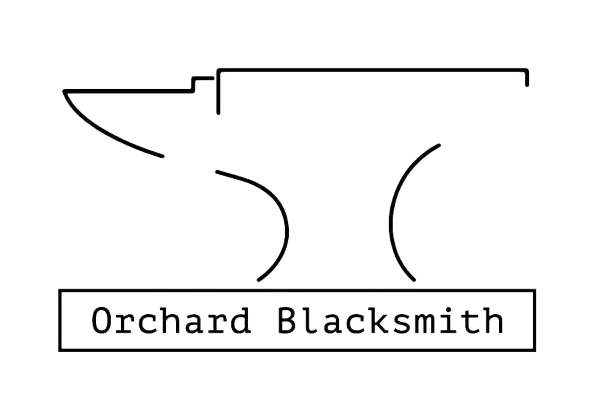A Blacksmith’s Guide to Chamfers, Bevels, and Rounded Edges
When you finish a forged project, the edge treatment can make the difference between something that looks rough and something that feels refined. Whether you’re making tools, furniture hardware, or decorative pieces, how you shape and finish the edges of your steel affects not only the look but also the safety and usability of your work.
In this guide, we’ll explore three of the most common edge finishes in blacksmithing and metalworking: chamfers, bevels, and rounding.
Why Edge Finishing Matters
Safety: Sharp edges can cut hands, snag clothes, or cause injury.
Durability: Finished edges resist chipping and wear better over time.
Aesthetics: Edge treatments add character and professionalism.
Function: Certain projects (like blades or tools) require specific edge geometries.
Chamfers
A chamfer is a straight, angled cut that removes the sharp 90° corner from a piece of steel. Imagine shaving off the edge at 45°.
How to Make a Chamfer:
Heat the workpiece to a forging heat.
Place the edge at an angle on the anvil.
Use controlled hammer blows to flatten the corner into a flat facet.
Refine with a file or grinder if needed.
Where to Use Chamfers:
Architectural hardware (hinges, brackets, latches).
Tools, to reduce stress concentrations at corners.
Decorative projects, to give clean lines and crisp highlights.
Bevels
A bevel is a more gradual angled surface, usually broader and more deliberate than a chamfer. Bevels are especially important for bladesmiths but show up in general blacksmithing too.
How to Make a Bevel:
Heat the steel to forging temperature.
Tilt the stock slightly on the anvil edge.
Strike consistently along the edge to draw it out into a sloped surface.
For precision, finish with files, belt grinders, or stones.
Where to Use Bevels:
Knives, axes, chisels, and cutting tools.
Decorative edges on straps, leaves, or sculptural elements.
Projects where you want an elegant taper instead of a square edge.
Rounding (a.k.a. Radiusing)
Rounding involves smoothing the corner into a curved surface instead of leaving it sharp or angled. This creates soft, comfortable edges that are pleasing to touch.
How to Round an Edge:
Heat your workpiece and place the edge on the anvil.
Use light hammer blows at varying angles to soften the corner.
Rotate the piece gradually until the sharp corner disappears.
Finish with filing or sanding to refine the curve.
Where to Use Rounding:
Handles, grips, or any part that will be touched regularly.
Household items like hooks, handles, and kitchen tools.
Sculptural and decorative work where organic lines are desired.
Tips for Better Edge Finishing
Reheat Often: Don’t fight cold steel—keep your edges hot.
Control Your Hammer: Light, consistent blows prevent uneven edges.
Match the Edge to the Project: Sharp chamfers suit industrial looks, while rounded edges suit organic or ergonomic pieces.
Refine Cold: Files, grinders, and sanders can help perfect your finish after forging.
Think Ahead: Edge treatment is easier to plan early than to fix late.
Final Thoughts
Chamfers, bevels, and rounding may seem like small details, but they’re what set polished, professional blacksmithing apart from rough work. Edge finishing is about more than looks — it’s about function, comfort, and longevity.
If you would like to discuss a potential project with us, please do not hesitate to contact us.
